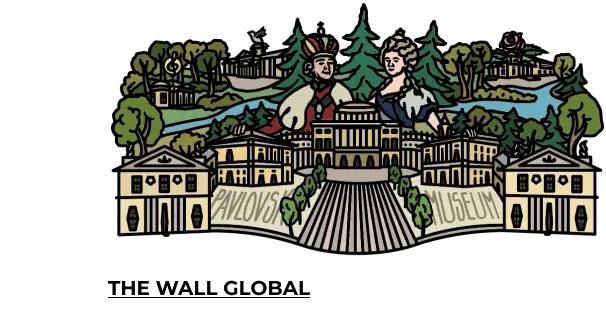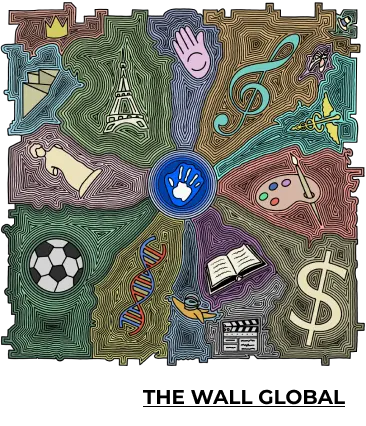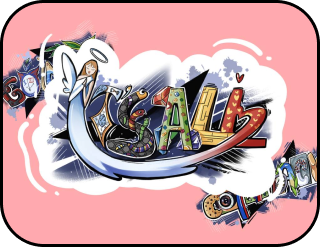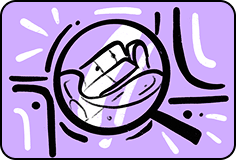Ode to blockchain
“Ready! It’s finished! Hold it!” a man in a heavily wrinkled gray raincoat said out of breath and placed a hefty stack of sheets on the editor’s desk, “Hold it!”
The editor, a calm person resistant to all manifestations of the authors, did not pay any attention to the news in the form of another stack of sheets.

Then the man picked up the stack of paper he had brought with him and put it back on the editor’s desk. The heavy sheets made a loud rumble.
The editor shuddered and looked at the one who had dared to tear him away from important matters:
“Mr. Smith,” the editor said, pushing aside a stack of carefully folded sheets, “Mr. Smith, you have been working for us as a staff writer for several months now and every time you hand me material as if you have made some incredible discovery. You don’t have to wave the covered pages in front of my nose, you know the rules. There is an email where you can send me materials to receive a list of comprehensive edits.”
The editor looked at the stack of papers lying on his desk and went back to work.
The author also looked at all the materials on the editor’s desk, which reminded him of orderly rows of blocks, and decided to act more confidently:
“Yes, but this time everything is different,” he almost shouted and moved a stack of his sheets closer to the editor. “In my article I am talking about the fact that a certain character, I called him Daniel, was very fond of keeping a diary in which he recorded all the important events of his life. And then he had a dream that he went to an event, where he naturally took his diary. At the event, he drank the offered glass of champagne, ate the offered food and went out onto the balcony to get some air, where he saw his colleague who was smoking there. Yes, not just smoking, but…”
“Smith, Smith, Smith…” the author was again interrupted by his editor, “I remind you that we are a magazine that writes about scientific discoveries, and you have a person smoking on the balcony. And then, what’s wrong with that? The person wanted to smoke, and another person saw him – an ordinary life picture.”
The author stopped short and fell silent, he was not pleased to be interrupted, but the desire to convince the editor to read his article turned out to be stronger and he continued:
“The thing is that smoking was strictly prohibited at that event!” the author answered, defending his material, “The character of the article knew that, so he wrote in his diary: ‘I went out onto the balcony and met a colleague who was smoking.’ After making the entry, Daniel wondered… What would happen if he lost his diary or the diary fell into the wrong hands? And in general, why was there a need for an entry in the diary about a smoking colleague, it was not that important… And he decides to correct this entry a little: ‘I went out onto the balcony and met a colleague who was just standing.’ And here is the most interesting part! Daniel was unable to correct the entry in his diary.”
“How did it not work out?” the editor was surprised, “Why? If you are leading the story to the fact that Daniel was attacked by his colleague and his diary was taken away, I remind you, Smith, that we are a serious publication that does not write detective stories!”
“Daniel couldn’t correct the record because it had got into the blockchain!” the author finally exhaled.
Taking a breath, he finally realized how tired he was and began looking around the editor’s office in search of a place where he could sit.
His search was interrupted by the editor’s voice:
“Where did the entry from the diary get?”
“Into the blockchain,” the author answered calmly, “Into the “Blockchain” or “chain of blocks.” If you imagine a diary that contains entries, then a block is a certain number of diary entries collected, verified and packaged together in a block. Such blocks are stored in a sequential chain, one after another, in the order they were added. The diary can be opened on any page to restore the picture of what was written, but in the blockchain you can get from the last block to the very first one and restore the entire chain.”
“I still can’t understand, Smith,” the editor said with a frown, nodding his head to the author in the direction of the chair in front of the desk. “Even if the entry was included in the block, why can’t it be corrected? Or is your text supposed to be science fiction?”
The editor understood that the author sitting in the chair opposite him would not leave, so he decided to listen to him after all.
“And here everything is just scientific,” the author smiled, sitting down in a chair. He was very pleased to have the opportunity to surprise the editor with his effectively chosen metaphors.
“Everything is just scientific and not at all fantastic,” he continued. “If you look closely at a block in the blockchain, you will notice that it consists of two parts – a heading and a list of transactions. The list of transactions is the very entries from our diary. And the heading stores service information: creation time, hash of this block and hash of the previous one.”
“Smith,” the editor interrupted the author again, “We are not a specialized IT publication. No one among our readers will understand what a “hash” is.”
“Well, here I have something written about this,” the author exclaimed, taking a piece of paper from the editor’s desk and began to read: “Hash (hash sum, hash code) is a meaningless sequence of numbers and letters, gobbledygook, roughly speaking, nonsense – gobbledygook. For example:
0035E21F5DE392FDFE1DA8A83D08104322FF3903D67756420F11A98E5689A3BB
This is the hash that the hash function created out of my message: “The editor promised to promote me today.”
A hash function is a program that takes normal data and creates this unique encrypted gibberish from it.
In the case of blockchain, the function accepts a line of absolutely any length (even huge) and every time it produces gibberish 64 characters long.
But if you change at least one character in the hash, the result will be completely different. Not just one character will change, but almost everything and at once. This is also called the avalanche effect.
Hash sums are very useful when two people have some secret information and would like to make sure that it matches without revealing the information itself.”
At this point the author stopped to look at the editor’s reaction. The editor looked at him with interest:
“So, it means, if you, Smith, now leave my office and start telling everyone that I’m promoting you, although we haven’t even talked about it, and if our entire conversation with you is encrypted with a hash code, it will be enough just to ask you to present it. If our hash codes match, then you are telling the truth. Do I understand you correctly?”
“So I’m telling the truth,” the author repeated the words of the editor, “All entries in the blockchain or in the diary are connected to each other through such hash sums, and as soon as the hero of my article somehow changes his entry in the diary, the verification system will at once discard the modified block as a false one. And each block also has a time stamp.”
The editor’s interest in the material added a few more decibels to the author’s confidence and he decided to ask a question:
“Do you think, Editor, it is possible to make an entry in the blockchain diary about my promotion?”
“Don’t hurry, Smith,” said the editor. “Let’s say I can demand that you show a hash code in order to establish the truth, but if the editorial office employs several hundred people, some of whom do the work remotely, how can we establish the truth in this case?”
“Solve the problem of the Byzantine generals!” the author solemnly declared.
It was noticeable that this was exactly the question he was expecting, “Imagine, several generals are besieging Byzantium. They have surrounded the city, but must collectively decide when to attack. If all the generals attack at the same time, they will win, but if they attack at different times, they will lose. The generals do not have reliable channels of communication with each other, because all messages they send or receive can be intercepted or sent to them fraudulently. How can the generals organize an attack at the same time? When no participant can verify the identity of other participants, how can participants collectively agree on a certain truth? And in case of victory, how will the generals agree on benefits and a single currency? And what currency can you trust? The Byzantine Generals Problem is a problem that describes the difficulty decentralized parties have in reaching consensus without relying on a trusted central party. That’s what I wrote in the article,” the author said and tapped the stack of sheets that he had placed in front of the editor.
The editor looked at the large amount of paper lying in front of him, looked at Smith’s rumpled appearance and grumbled tiredly:
“Smith, we are not a historical publication…”
Smith smiled again, because during the conversation he had already learnt all the editor’s arguments, so he continued calmly:
“In order to ensure that all nodes, as participants in the blockchain network are called, agree on the same version of history, the blockchain networks implement so-called consensus mechanisms (also known as consensus protocols or consensus algorithms). Consensus is the process by which a group of peer nodes on a network determine which transactions on the blockchain are valid and which are not. Consensus mechanisms are techniques used to achieve this agreement. It is these sets of rules that help protect the network from malicious behavior and hacker attacks.”
Smith spent several more hours recounting his material to the editor. He talked about how blockchain helps create a true reputation on the network, about how blockchain helps authors protect any of their works, he spoke about blockchain oracles and about the Global Wall, on which, thanks to the blockchain, everything that is depicted gets a name.
The editor interrupted their conversation many more times with his stern remarks: “Smith, we are not a dictionary,” “Smith, we are not a travel magazine,” “Smith, we are not a cookbook.”
But how their conversation ended, you and I will never know, because: 0035E21F5DE392FDFE1DA8A83D08104322FF3903D67756420F11A98E5689A3BB
The double-slit paradox awaits you! Learn from particles how to act mysteriously and unpredictably.
Thank you!







